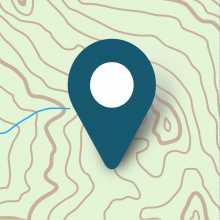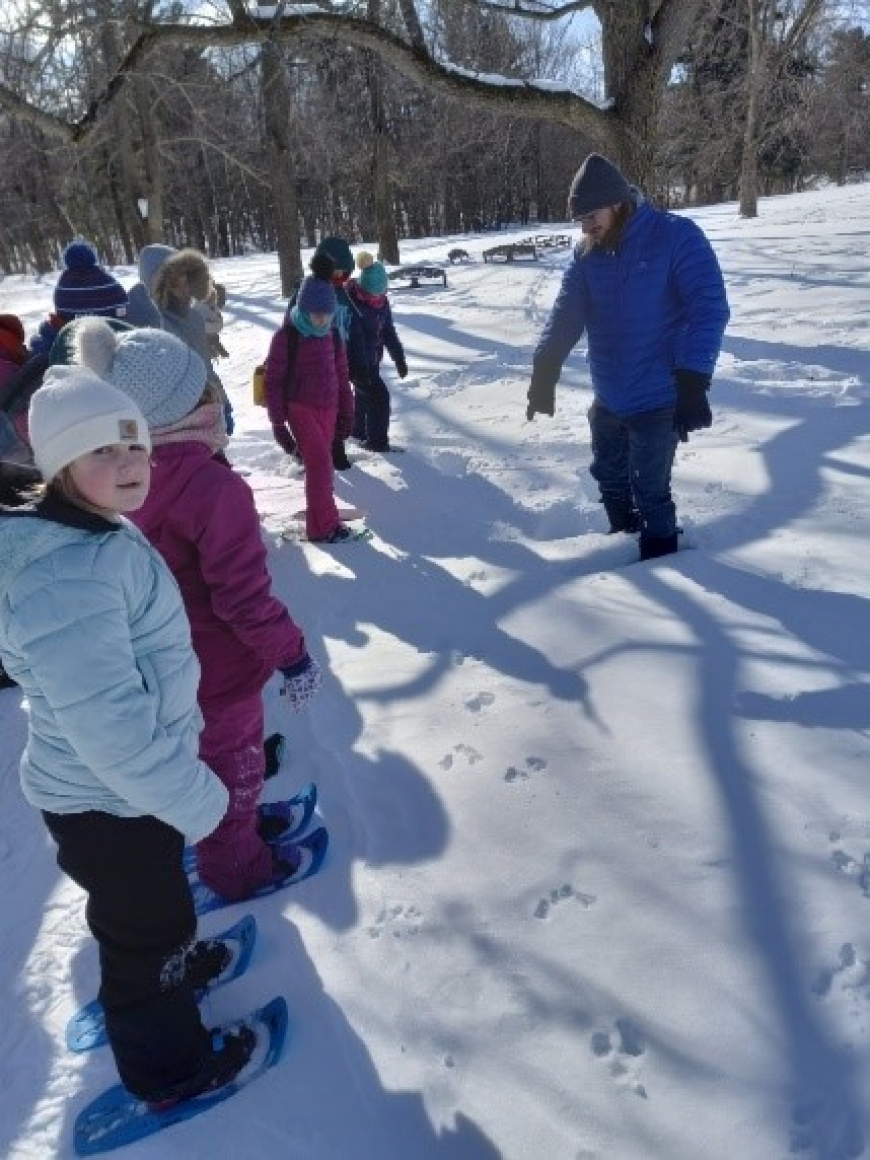
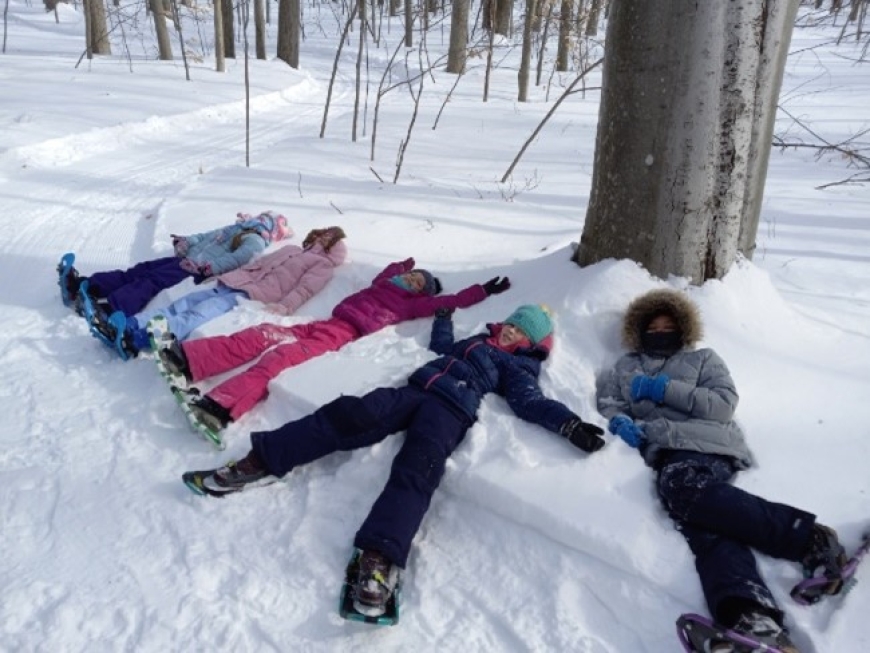


Tracking Tracks with Adventurous Girl Scouts
The North Country has been blessed (or cursed depending how you look at it) by a blanket of white gold this winter. Several winter storms accumulating several feet of standing snow shows that Punxsutawney Phil might not be that unreliable of a winter predictor after all. Phil and his hibernating friends tend to stay indoors during the winter, but if you take a walk out on a trail this time of year you’ll still see signs of lots of animal activity.
That’s what our event in Heritage Park, Tracking Tracks, was supposed to be about. Unfortunately, mother nature had other ideas with travel bans around the county. We had to cancel that event, but the snow that was dumped across the landscape created a blank canvas for new animal tracks, and we wanted to take advantage of that opportunity.
Rather than host an event in Heritage Park, we partnered with area Girl Scout troops to visit Nicandri Nature Center in Massena. Nicandri has free snowshoes for visitors to use, important gear even with the well maintained trail network they have, and essential if we wanted to leave the packed trail to follow a set of tracks into the woods. We set out from the nature center after watching birds visit their feeder and deer lick up the spilled seeds.
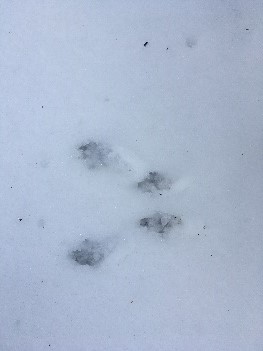
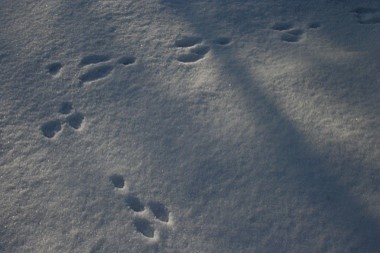
The first tracks we ran into were squirrel tracks. In deep snow, these animals will leap through the snow leaving behind what many mistake for rabbit tracks. These tracks have two large feet in front of the track and two smaller feet between them towards the back. The larger prints are actually their hind legs, and the smaller prints their front legs, so why are they reversed in the print? Like rabbits, when squirrels leap through the snow they land on their front feet first, then bring their hind legs forward to start the next jump, placing their hind legs in ahead of their front feet to set up the next jump.
So how do you tell squirrel and rabbit tracks apart? Primarily, you look at the pattern of their front feet. Squirrels tend to land on their front feet simultaneously, leaving parallel sets of tracks as they bound through the snow. Rabbits, on the other hand, offset their front feet as they land, sometimes going so far as to place them one in front of the other. In addition to the pattern, rabbits also have larger hind feet in relation to their front feet than squirrels. Because they’re made to jump, you’ll also see a greater distance between tracks from rabbits compared to squirrels.
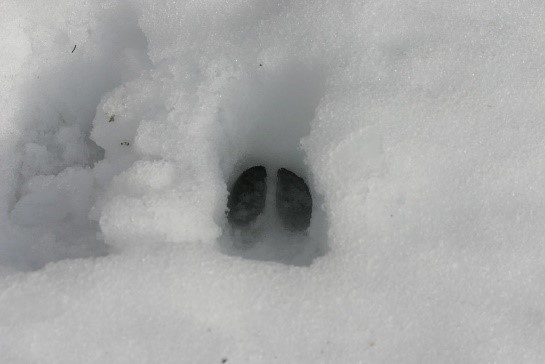
There are only two animals that leave behind tracks with deep, pole-like holes. You can guess which one we saw plenty of – deer. Deer and Moose have hooves, so their tracks look like a pair of thick crescent moons coming together, sometimes with a pair of dots behind them. When walking around Nicandri we often saw deer tracks near their nature center, along the edge of the woods, and following the groomed trails throughout the woods. Occasionally there would be tracks cutting between the trees, but these were almost always evidence of a large group of deer moving together, helping each other move through the deep snow. After talking a bit with one of Nicandri’s naturalists, Lucas, we were told that the deer had started to have trouble making their way around the property due to the deep snow. We also found evidence of this, seeing big holes where it appeared a deer had attempted to bound through the woods, only to hit the snow and sink chest deep. Not the clear tracks we’d find in the trail.
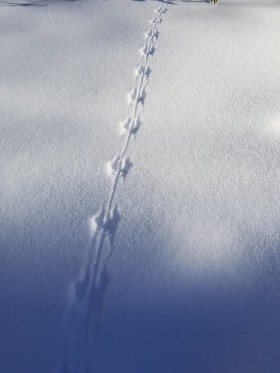
In contrast with the large body imprints and deep leg holes the deer would leave, we also found the tracks of mice or voles scattered throughout the woods. These tracks look like tiny versions of rabbit and squirrel tracks, lasting for only a few feet between the snow wells around trees. At first we thought they were caused by mini wind-blown snow balls tumbling across the surface of the snow, but when looking closer we could see the imprints of feet within each step. Mice and voles leave great tracks if you can find them, because they’re so light that they don’t typically sink into the snow as they walk.
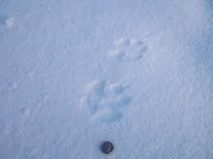
Finally, we were treated to a special set of tracks, fox or coyote. Both fox and coyote have tracks similar to that of a dog, all three species being from the canine family. Fox and coyote, however, walk with perfect steps. That means that they place their hind legs into the holes left behind from their front legs as they walk, leaving behind only 1 pair of tracks, rather than 2 pairs. That’s how we know that these tracks weren’t caused by a dog, because dogs will leave behind a smattering of paw prints as they walk. We believe they the tracks we found were coyote tracks due to their size. Coyote are larger than fox, and will leave larger paw prints as a result. Both animals have 4 toes, with fox tracks bring slightly thinner on average than coyote.
To bring it back to Canton, the important thing to remember is that all of these animals, and more, can be found in Heritage Park. While I wouldn’t expect to find coyote tracks that deep in town, we know that they live in the area, and fox have been seen within the village before. Deer and squirrels are a common sight, and while rabbits, mice, and voles tend to be more elusive, their tracks can be found with a tentative eye to detail. If you have a chance, visit Heritage Park before the end of winter to walk around the island. See what animals tracks you can find, or what other signs of wildlife y

